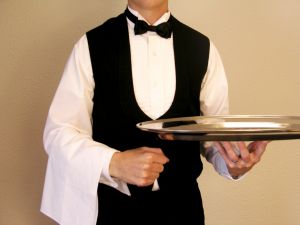How to Eat at Restaurants on The Specific Carbohydrate Diet

When I grew up, eating out at a restaurant was a treat. Nowadays, it seems like it is as normal as owning a cell phone. Well, that all changes when you start the Specific Carbohydrate Diet. While doing the SCD diet, it can be nearly impossible to guarantee a meal that is prepared by someone else is legal. Because of that, it is generally always discouraged to try to eat out while on the diet, especially if you are new to the diet.
However, there is going to come a point in time on the diet when you might end up in a situation where you are eating out. With so many functions of our society taking place around food, there is a possibility you might be in that position. In order to try to ease your dining experience, I wanted to put together some useful ideas that I’ve learned.
Qualities to Look for in a Restaurant
First off, from my experience, many issues regarding the eating out experience are mitigated by properly researching a restaurant. Usually you won’t find SCD legal foods at a chain restaurant. Typically, you’ll have to search out the higher end of the value scale. Many lower end chain restaurants don’t actually cook their meals. Instead, they end up re-heating mass-produced entrees that almost always have been chemically altered on a food assembly line off site. So, even if they wanted to prepare the dish SCD legal they couldn’t.
A good quality to look for is gluten-free menus. These can often be found online if available (although not always), as I’ve found that restaurants that are truly capable of preparing SCD legal meals are very good at promoting the fact that they cater to people with food allergies.
Another helpful clue that a restaurant might be able to accommodate me is if it is a seafood or steak house, due to seafood and beef usually not being marinated.
The next step in the due diligence process is to actually call the restaurant and tell them that you have multiple food allergies and would like to speak to a manager about them. The first thing I tell them is that I have to eat gluten-free and grain-free. If the’re knowledgeable about this, normally we are off to a good start. I don’t start describing the SCD diet, because I’ve found that if I list too many “can’t have things” in a row, they easily become overwhelmed.
At this point, depending on what they’ve already covered with me, I start going through the following list of questions (making sure I get an answer to them all at some point in the conversation).
6 Questions to Ask When You Call a Restaurant
- Do they marinate any of their meats? If all their meats are marinated it is a no-go.
- Where does their meat come from? Be careful of frozen chicken as it normally has been injected with an SCD illegal broth solution.
- How do they receive their vegetables and fruits? Frozen and fresh are normally okay, canned is no good.
- Can they prepare my meal in a clean area separate from other diner’s food? Avoid cross contamination as much as possible.
- Does the restaurant cook with butter or margarine?
- What kind of oil do they cook with? Olive oil is good to ask for, to avoid any man-made sprays or vegetable oils.
If a restaurant can pass all these tests, then the next step is using common sense when ordering in person.
Action Steps Once You’re at the Restaurant
Make sure to make it clear to your server that you have food allergies. It’s always safest to ask for only salt and pepper as seasonings. (Bring your own spices into the restaurant if you want.) If you’re ordering a salad, ask for only olive oil or no dressing. Always try to get steamed vegetables or a fruit cup as your side dishes.
If you get stuck in an emergency situation, and after looking at the menu you don’t feel comfortable ordering anything, don’t be afraid to make up your own dish on the fly. I’ve worked with servers to create my own salads combining a meat they use for an entree and eliminating any illegal ingredients from the salad.
Lastly, don’t be afraid to bring in your own meal if you are confronted with a social situation in which you need to be at a restaurant. Just let your server know that you have severe food allergies and need to eat your own food. Ask them to heat it up in the microwave when everyone else’s food is ready (I’ve never had a problem with this request). The important thing to remember is that you are always taking a risk whenever you eat out and someone else is preparing your foods. There could be consequences in even the most careful restaurants. The decision to eat out is not a light one to make, and it’s probably best to wait until some healing has taken place before even considering it.
If anyone else has any tips, please leave them in the comments section below, thanks!
-Steve
P.S. – If you’d like more help with getting started on the diet, grab a copy of our book here.
Did You Like this Article?
Subscribe to our newsletter to receive email notifications, some ways to find relief, and next steps.
